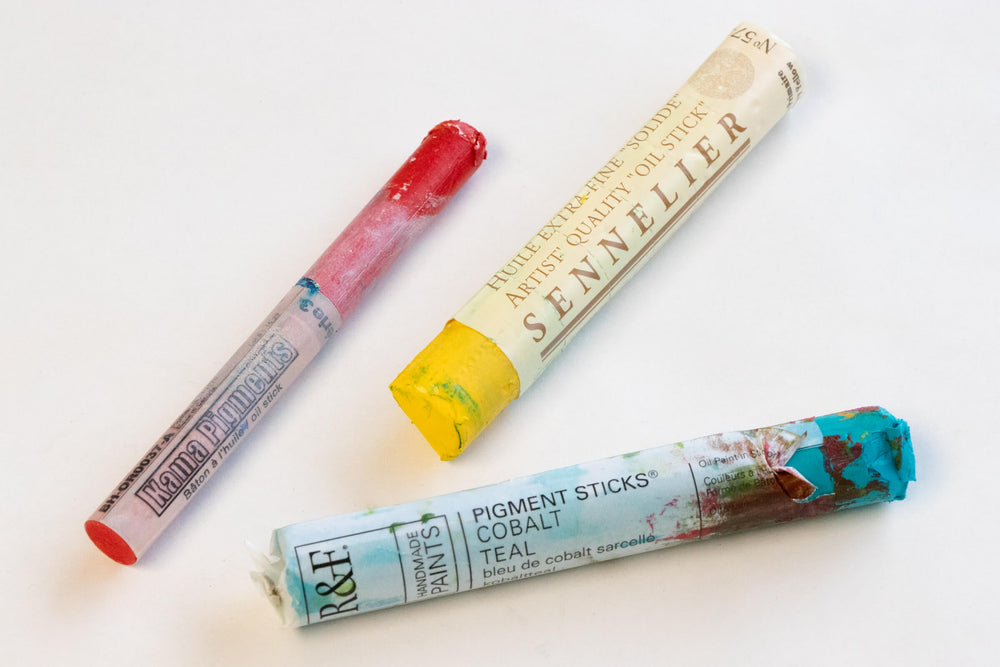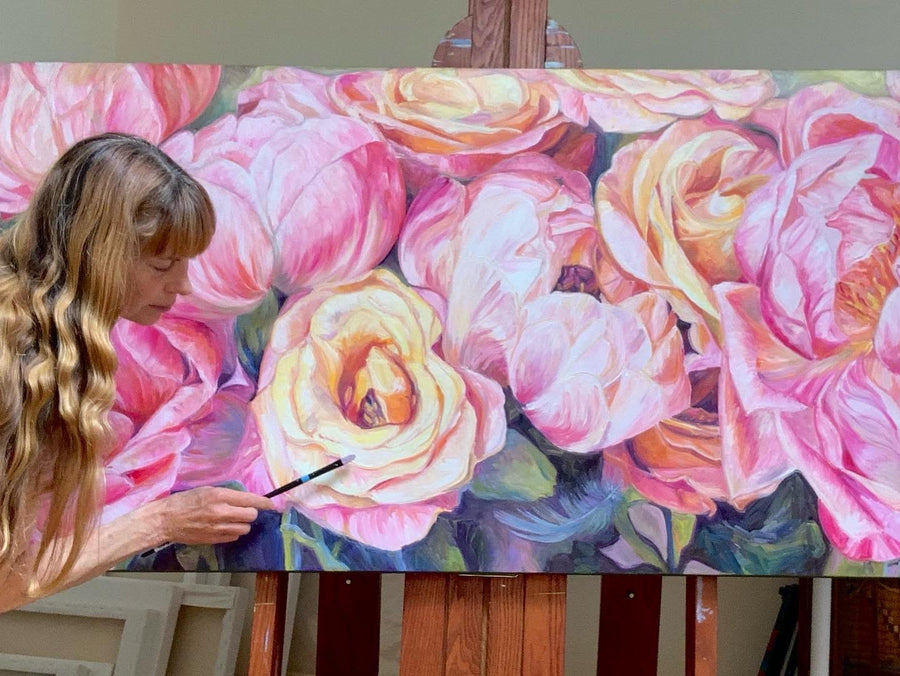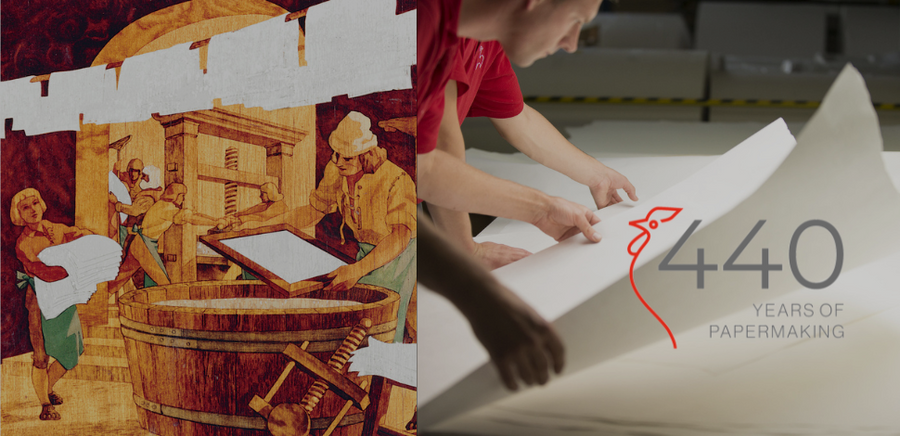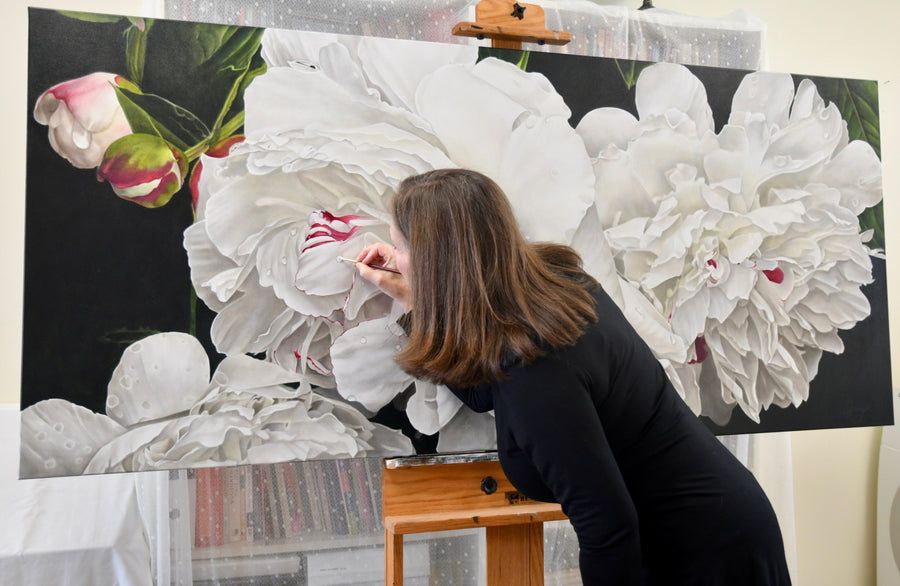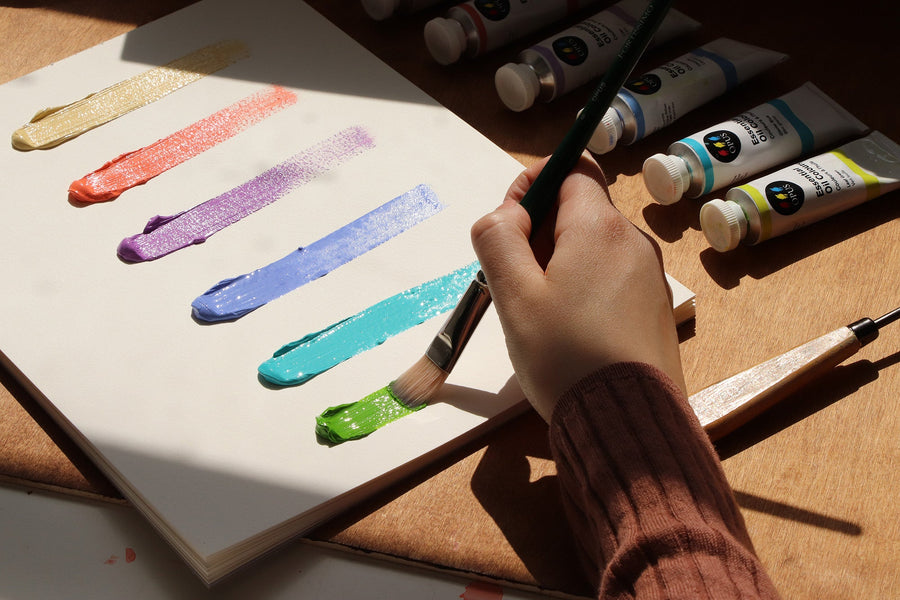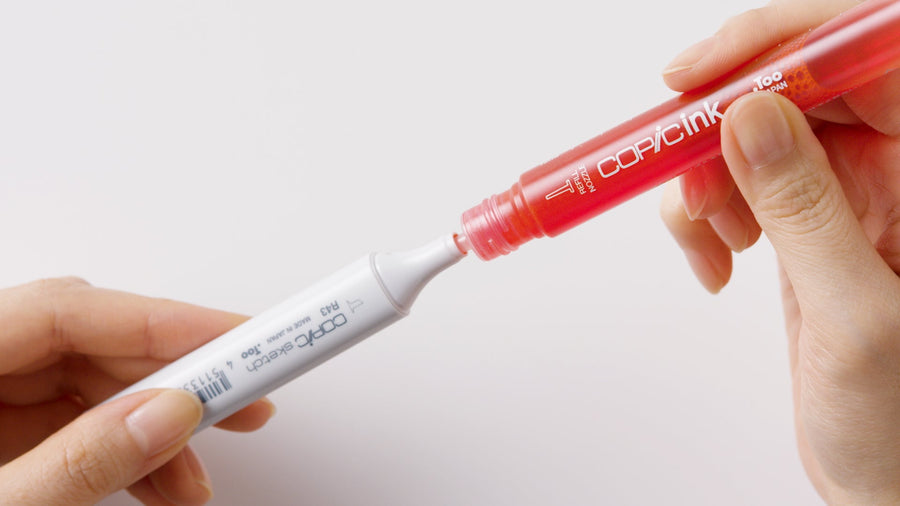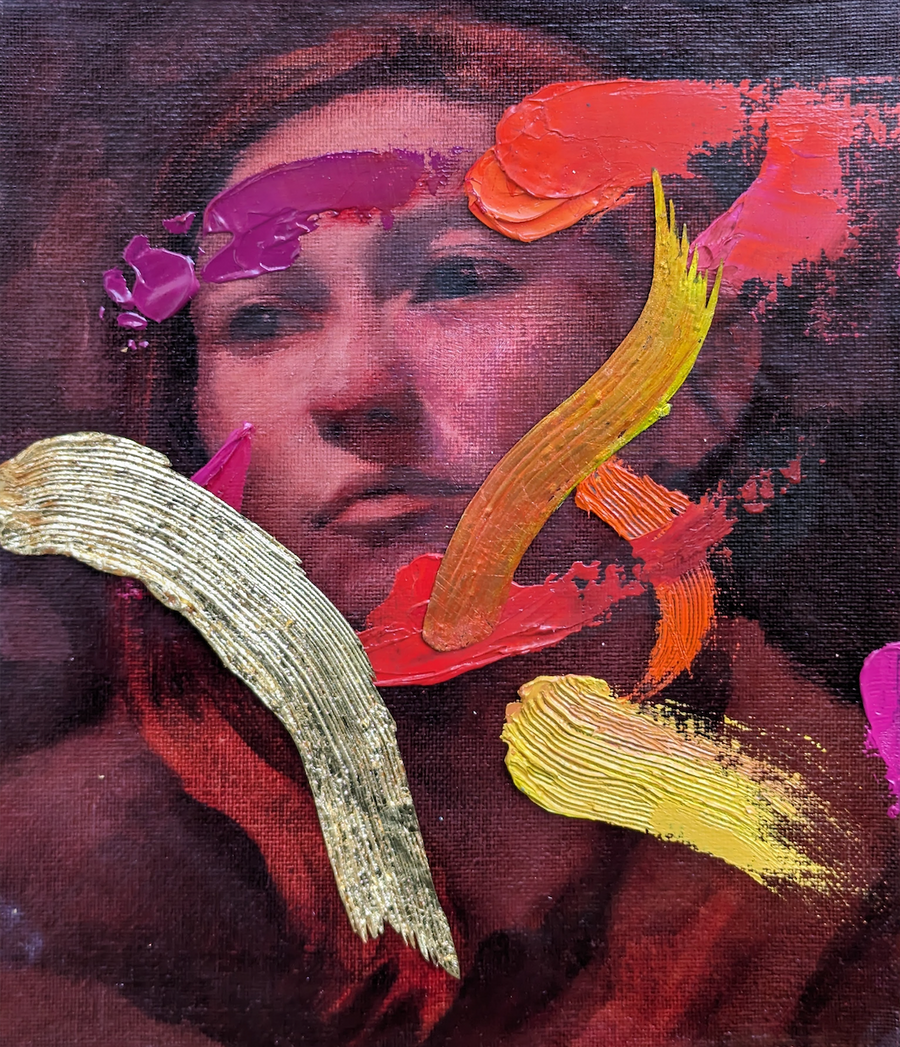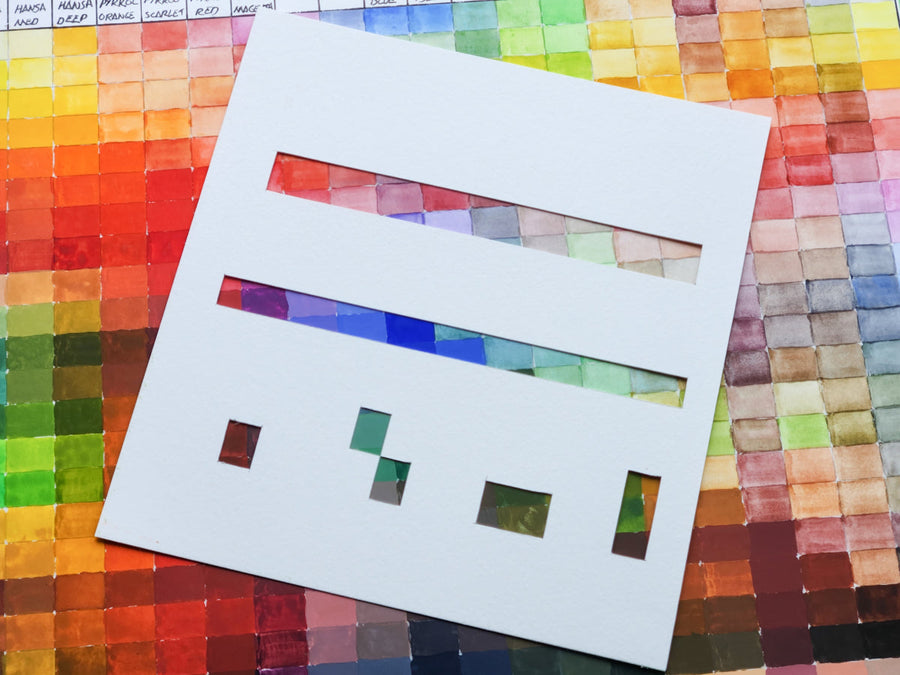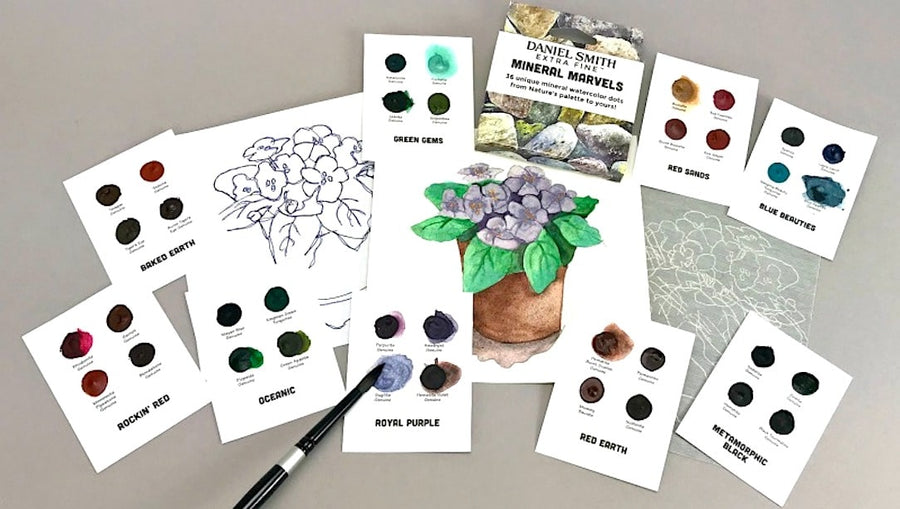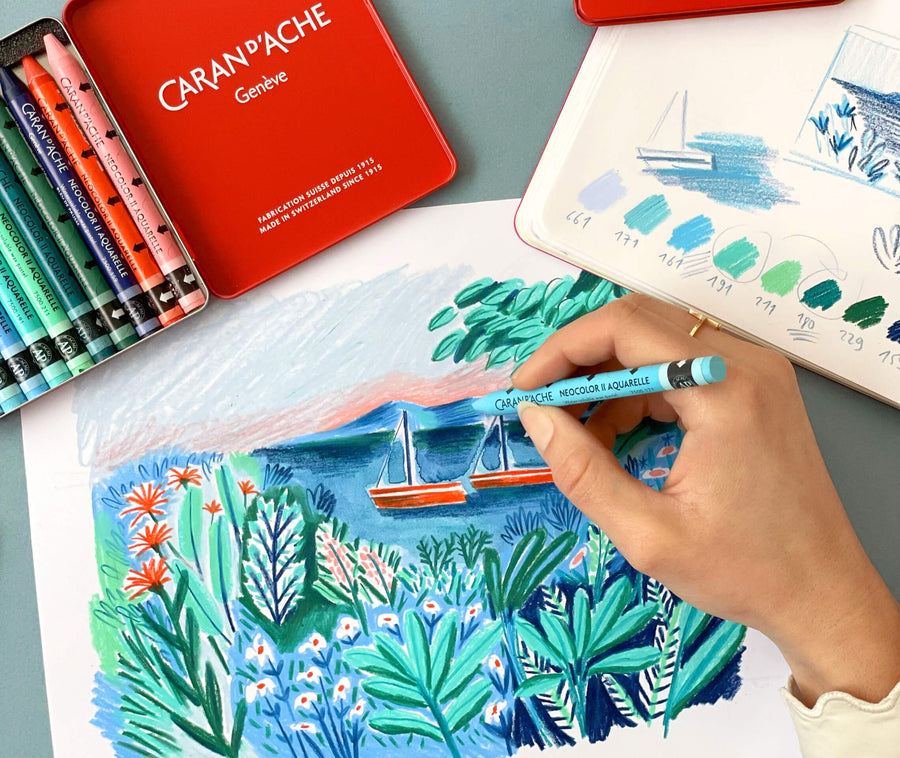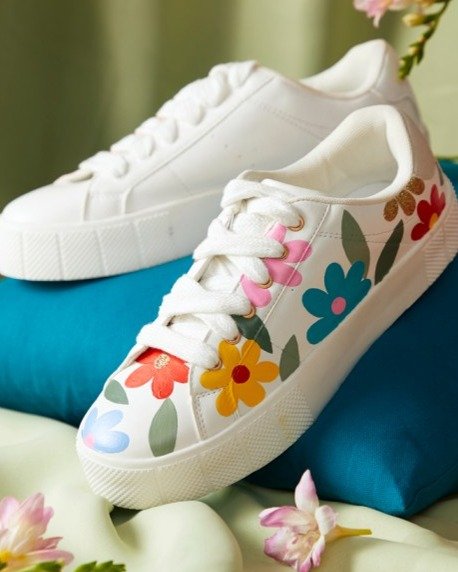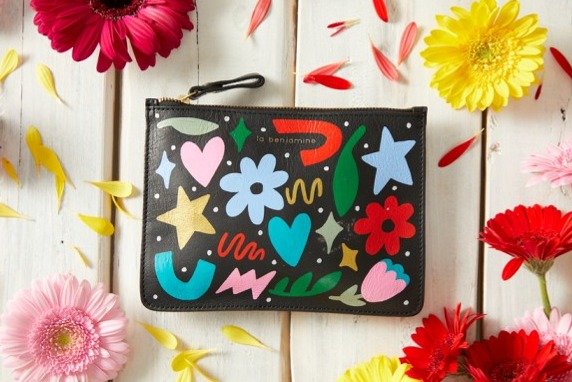Oil Sticks, Paint Sticks, Oil Bars: What Are They?
Oil Sticks are oil paints formed into sticks, which allow you to draw your paints directly onto your surface. You may also see them named paint sticks, oil bars, among other names.
These paints bridge the gap between drawing and painting, and make a great choice for starting your painting with a loose sketch. This paint format also offer artists immediacy and spontaneity, giving the option to loosen up and work gesturally.
At their heart though, oil paint sticks are still oil paints. They contain the same oils as your tube oil paints would, as well as the same fine pigments. These paint sticks can be used alongside your traditional oil painting tools: brushes, oils, solvents, and others.
In this article, we'll introduce the oil sticks available at Opus Art Supplies so that you may begin your very own oil stick adventure! But first, read on for a few quick pointers and tips for painting with oil sticks.
Quick Oil Stick Pointers & Tips
What supplies do I need for painting with oil sticks?
Painting with oil sticks is similar to painting with regular oil paints: palette knives, brushes, oil mediums, gloves, paper towels, rags, cleaning supplies & more will all be useful.
What surfaces work well for oil sticks?
Sturdy hardboard or cradled wood panels will hold up well to the additional pressure that you may apply while using oil sticks.
A classic stretched canvas will work just fine, though the canvas will have more give.
Oil paper is another option provided you use a suitable drawing board.
This oil stick doesn't seem to be working right...
If your oil stick doesn't leave behind a nice smooth oil paint trail, it may have a skin or film preventing it from doing so. Try removing a thin layer from the tip using a paper towel or the edge of a palette knife. This oxidized skin naturally forms, and ensures you can use the remainder of your oil stick. If you prefer to slow the formation of this skin, you can wrap the sticks with plastic wrap and store the sticks in as airtight a container as you can procure.
What's the difference between oil sticks and oil pastels?
A major difference between oil sticks and oil pastels is drying capability. Oil sticks will have similar dry times to oil paints. Oil stick marks become touch dry, then drying completely over several months. Oil pastels, however, are formulated to stay malleable. Oil pastels will require some form of fixative to set layers. Oil sticks also require the same gesso preparation as oil paints, v.s. oil pastels, which can be used on many more surfaces. One last clear difference is the format, the average oil stick being much larger than the typical oil pastel.
Are oil sticks messy?
Yes – you'll definitely want to use gloves and have plenty of cleaning supplies nearby. We tend to find oil stick marks on the strangest locations after a painting session.

R&F Pigment Sticks
R&F Pigment Sticks are lipstick-soft, luscious oil sticks composed of basic, traditional materials: beeswax & plant wax, linseed oil, and pigment. They are manufactured in the USA, available at Opus in a 38ml format.
You'll find these are the creamiest sticks available. It takes minimal pressure to work these into your surface or blend colours. R&F offers a Colourless Blender Stick – essentially made the same as any other R&F Pigment Stick, but without any coloured pigment. The Colourless Blender is useful for increasing paint transparency as well as blending colours on your painting. In general, R&F sticks will take more time to dry than the other options, some colours drying in upwards of one week.
The softness of these paint sticks makes it easy to lift dabs of paint using a palette knife or a brush for fine touches of colour for those who enjoy using their knives and brushes! They can also be used with stencils, and on Gelli Plates, for monoprinting techniques.



Sennelier Oil Sticks
Our friends in France put their oil pastel expertise into developing the Sennelier Oil Sticks. The Sennelier Extra-Fine Solid Oil Sticks are composed of pure pigments, safflower oils, and mineral wax. The formulation is designed to provide excellent consistency, cohesion, and conservation properties.
Sennelier sticks are built slightly thicker than the other stick options, and some colours are available in both 38 and 96ml volume formats. In comparison to the other oil sticks, Sennelier Oil Sticks are moderately firm and typically dry to a gloss finish in a few days.



Kama Oil Sticks
Kama Oil Sticks are made in Montreal, composed of Kama's expert pigment selections, walnut oil, and natural waxes.
These oil sticks are both the firmest and the smallest, coming in a 15ml stick. Kama Oil Sticks may resemble wax crayons at first inspection, but there is a softer oil paint beneath the surface. We found a palette knife useful for removing the tougher skin on these oil sticks. The thinner, firmer stick lends well to making finer marks, which would be a good option for creating an initial sketch for a painting.
The Kama Oil Sticks tend to dry the fastest out of the three oil sticks in this article.


Additional Notes & Images
Removing the skin
The following images show the “skin” that develops on the outer layer of the sticks. As previously mentioned, it naturally forms and keeps the inner paint usable. It can be removed by rubbing on your surface, using a paper towel, or with a palette knife or other tool.
Blending Options
Oil sticks can be blended just like traditional oil paints. In these photos we demonstrate just two ways: blending by working the stick over the two colours, and blending using gloved fingers. Blending tools like stumps and silicone tools will also work, as will using a brush to move the paints. Different techniques will provide different effects, so take a moment to experiment!
